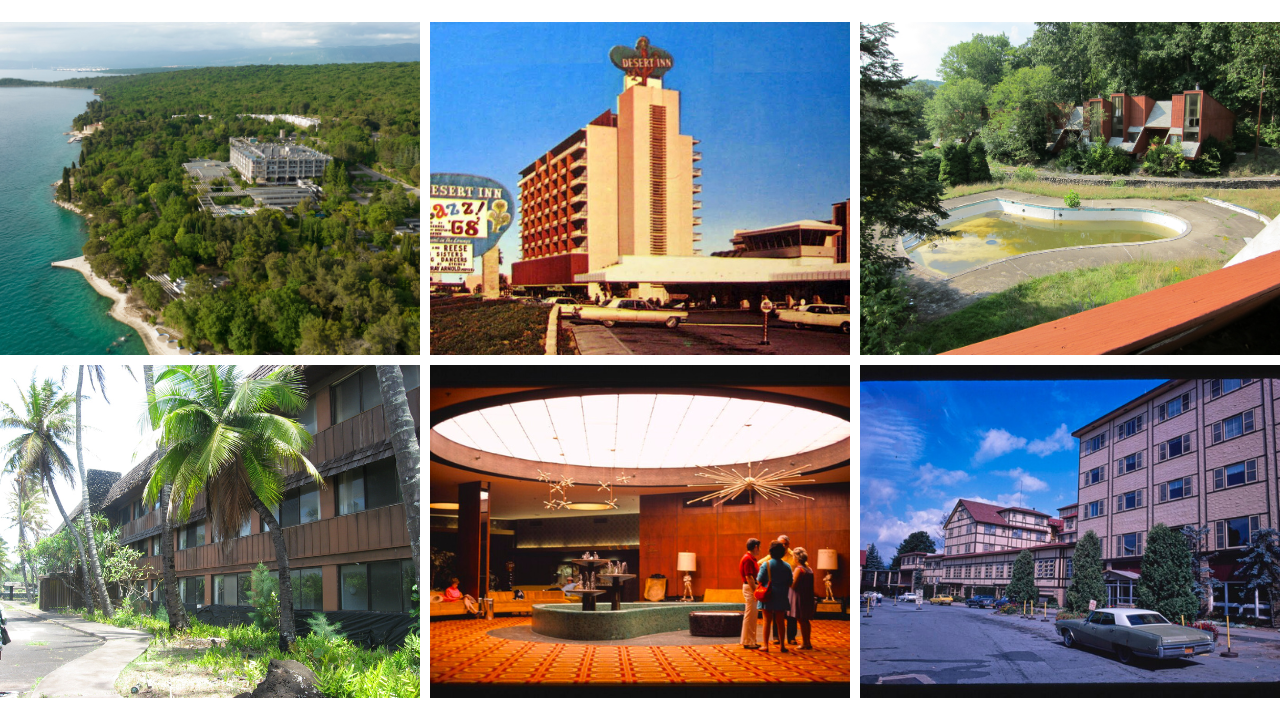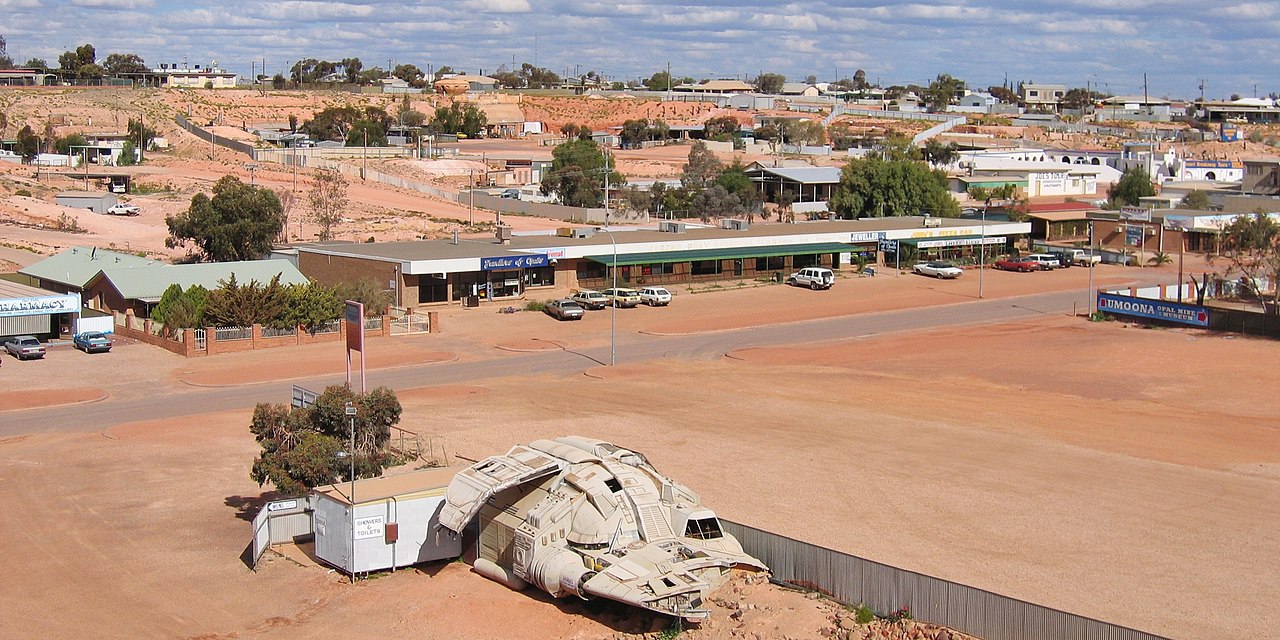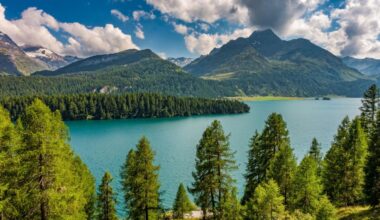Once, the world’s elite chased summers, secrets, and status through remote peninsulas, neon skylines, and mountain valleys, convinced their retreats would last forever. These resorts staged honeymoons, treaties, film shoots, and discreet negotiations, then buckled under cheap flights, political crises, new tastes, and relentless upkeep. What remains is a chain of drained pools and shuttered lobbies where staff, neighbors, and landscapes absorbed the fallout, where ownership schemes unraveled, and where silence preserves more truth than any archive of glossy brochures.
Grossingers Catskill Resort Hotel, New York
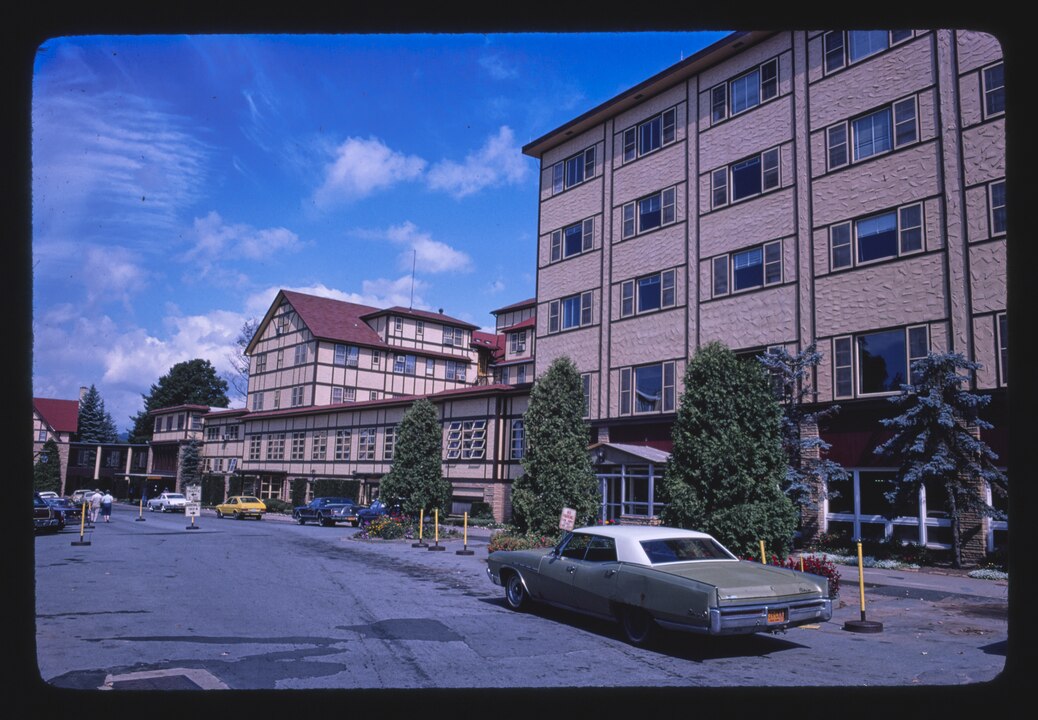
In its heyday, Grossingers turned a Catskills hillside into a self-contained world of ballrooms, ski slopes, and kosher feasts for New York elites. Jets landed on its private strip, boxers trained by the pool, and entertainers packed theaters all summer. As air travel widened options and renovation bills climbed, buildings emptied; demolition and fire erased most of it, leaving redevelopment plans circling a mythic, long-vanished social stage.
Nevele Grand Hotel, New York
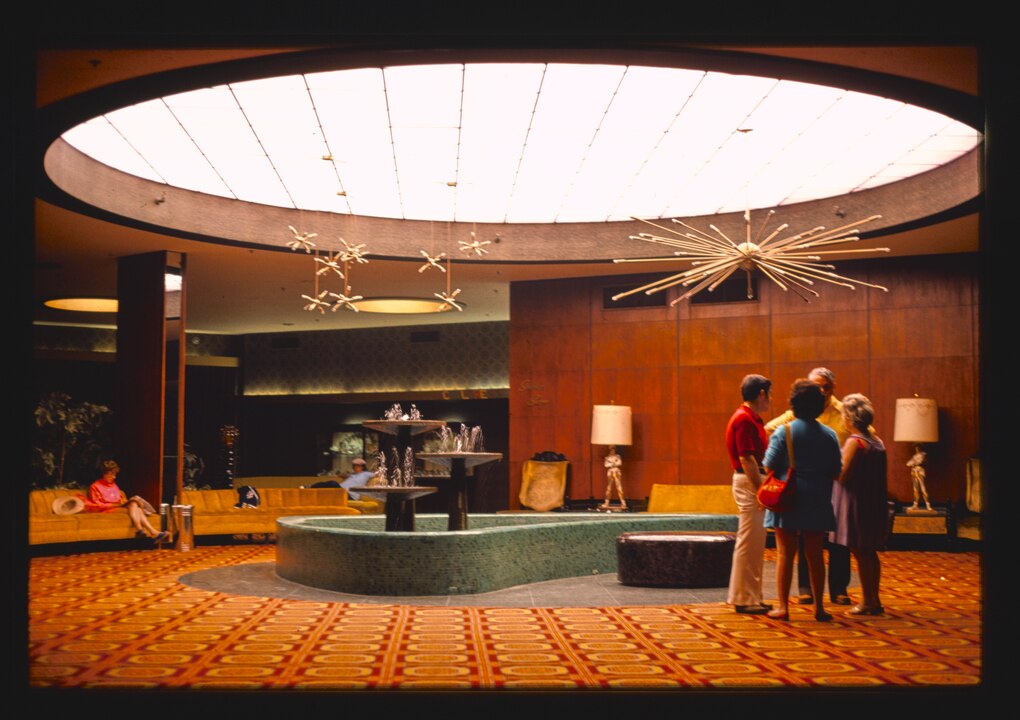
The Nevele grew from a 1901 country inn into a modernist landmark, its curved tower, rink, and golf course signaling status for city families chasing mountain air. Conference crowds and holidaymakers filled terraces above the Shawangunks. When the Borscht Belt lost momentum, the property needed more investment than owners could justify. Closing in 2009, it now lingers as a hollowed shell, elegant lines waiting for either a decisive revival or a merciful clean slate.
Coco Palms Resort, Kauai, Hawaii
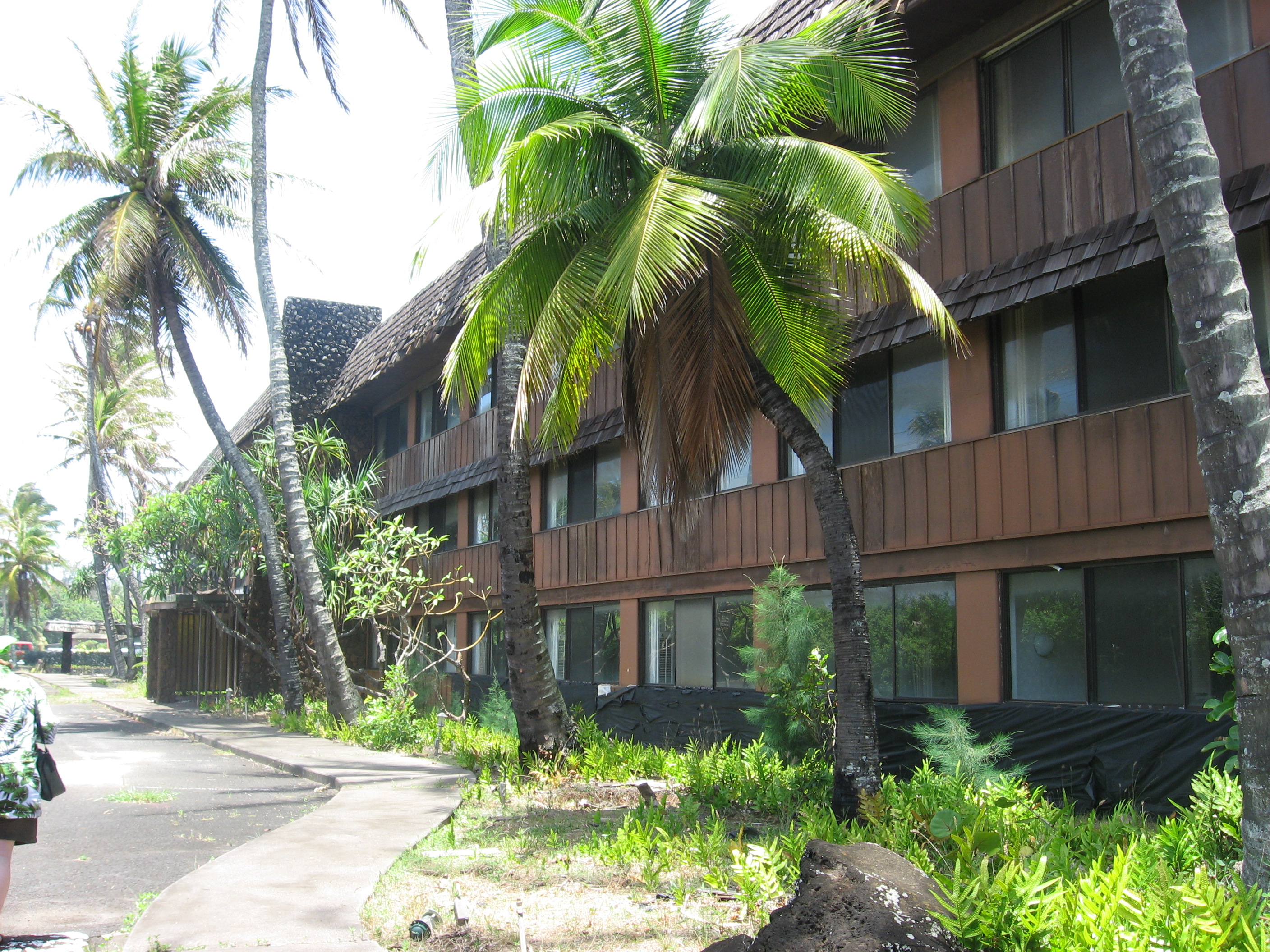
Coco Palms fused midcentury resort fantasy with culturally significant Wailua land, hosting lagoon weddings, torchlit ceremonies, and film crews that sold a stylized vision of Hawaii to affluent guests. Hurricane Iniki’s strike in 1992 shattered buildings and business at once. Decades of legal fights, failed financing, and Native Hawaiian opposition turned the site into a cautionary symbol, where decaying halls and royal history sit uneasily beside profit-driven dreams of yet another comeback.
Haludovo Palace Hotel, Krk, Croatia
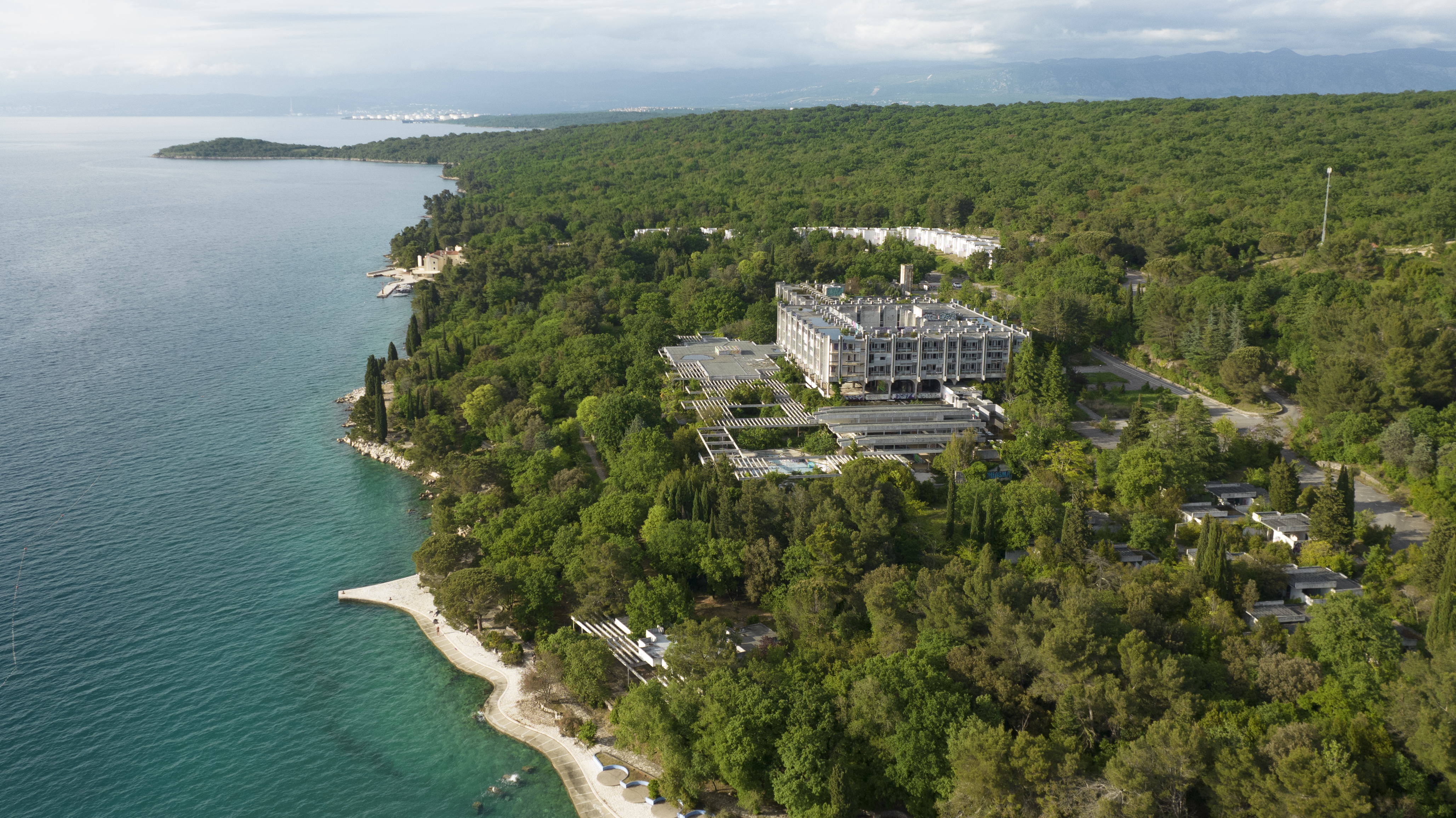
Haludovo Palace rose on Krk as an opulent Adriatic playground funded by foreign capital, with sculpted pools, hostesses, and a brutalist structure built to impress visiting elites. The casino faltered within a year; later, conflict, privatization, and neglect stripped out its glamour. Refugees once slept where champagne once flowed, and scavengers emptied what remained. Today, open stairwells and spray-painted lobbies frame a stark monument to political shifts and overconfident fantasy.
Varosha, Famagusta, Cyprus

Before 1974, Varosha’s beachfront towers, boutiques, and modern hotels drew film stars, royals, and wealthy sunseekers to a showcase of Mediterranean modernity. The Turkish invasion emptied the resort quarter in hours, leaving wardrobes, cars, and half-built dreams behind fences and guard posts. Partial reopenings now reveal cracked facades and silent hotels, turning a onetime luxury hub into a charged landscape where tourism, grief, and unresolved claims overlap uneasily.
Great Gorge Playboy Club / Legends Resort, New Jersey

The Great Gorge Playboy Club offered a curated fantasy in Vernon, with chalet towers, golf, pools, and cabaret shows marketed to executives and entertainers. Ownership changes tried to pivot from Playboy glamour to family resort and conference trade, but maintenance, lawsuits, and dated rooms undercut every reinvention. By the 2000s, broken amenities, code violations, and dark windows replaced celebrity stays, leaving a stranded high-rise that feels like a punchline no one bothers to tell aloud.
The Desert Inn, Las Vegas, Nevada
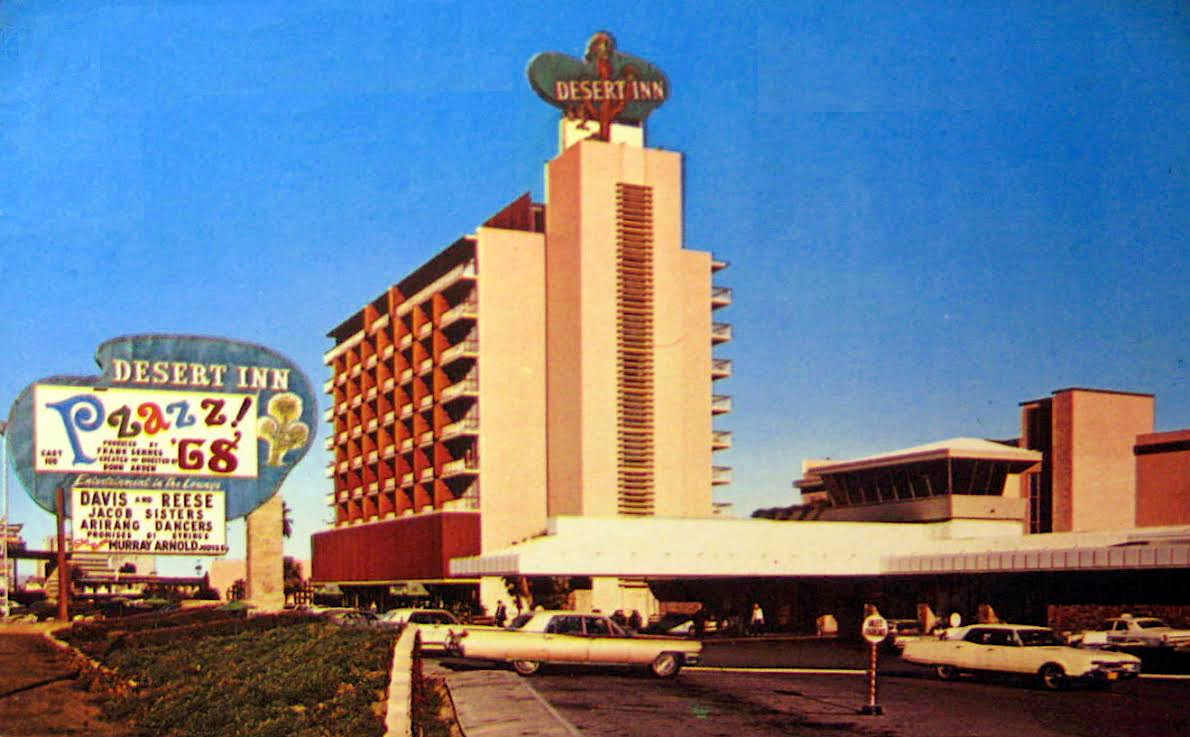
The Desert Inn opened in 1950 as a polished Las Vegas address favored by entertainers, financiers, and politicians who preferred quiet competence to spectacle. For half a century it framed the Strip’s image of grown-up luxury, with fairways and suites hosting deals that never reached headlines. As themed megaresorts surged, its scale and style felt muted. Purchased, closed, and imploded to make way for Wynn, it now survives in museum signs and long, affectionate stories.
Penn Hills Resort, Pennsylvania
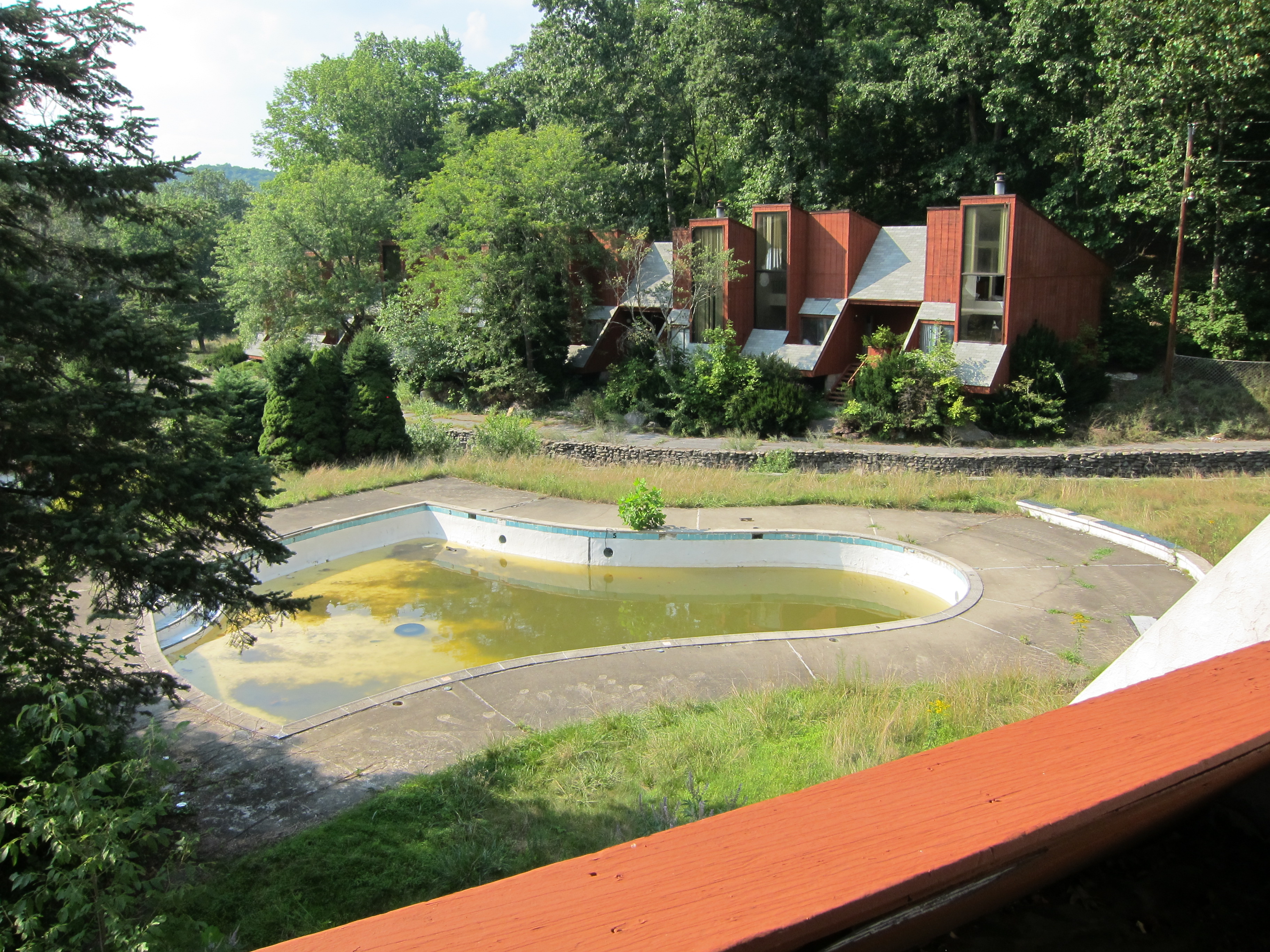
Penn Hills turned a Pocono tavern into a honeymoon promise of heart-shaped tubs, mirrored ceilings, and winter skiing that let young couples taste glamour on a reachable budget. Behind the scenes, aging systems, back taxes, and shrinking demand stressed the operation. Closure in 2009 left unsecured buildings to vandals, fires, and collapse. With demolition nearly complete, its legacy lives in postcards and rumor, a reminder of how aspirational fantasy can fade faster than the bill comes due.
